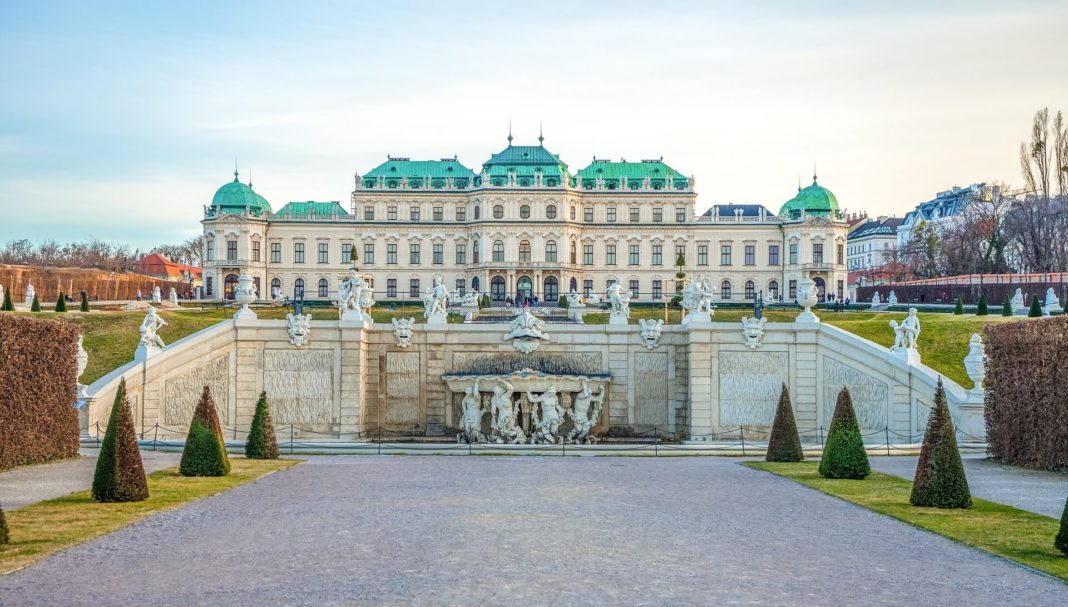Austria is a land of natural beauty where you can enjoy the best of nature and culture. The country has so many tourist spots that you might get overwhelmed by all the options. However, fret not – we’ve taken care of everything for you! Here are our top-rated attractions in Austria that you must not miss if you’re traveling there at any given moment.
1. The Vienna Hofburg: Austria’s Imperial Palace
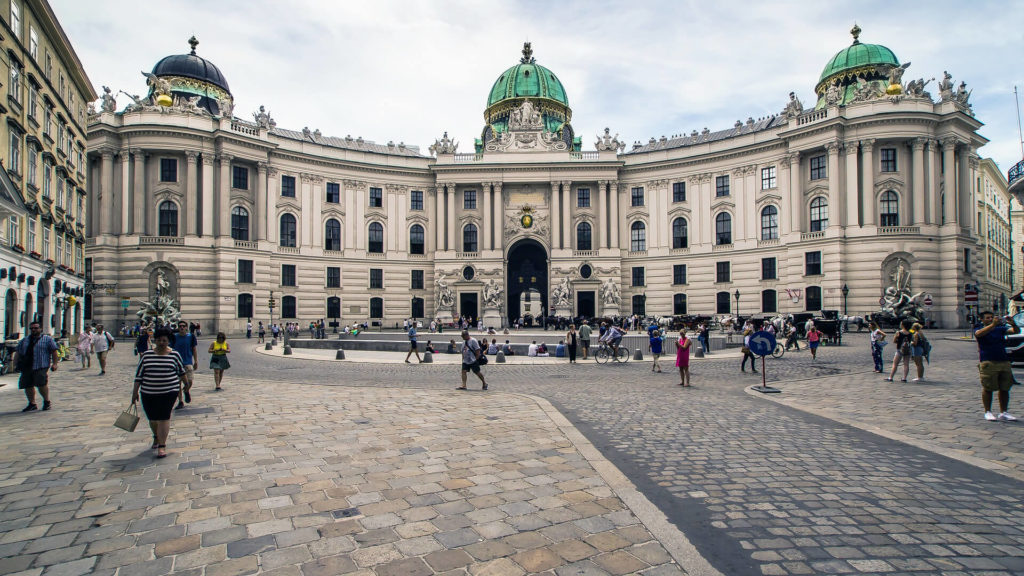
The magnificent Hofburg Palace in Vienna served as the official residence of Austria’s Habsburg monarchs for many centuries. The Habsburgs were among the most powerful families in European history. One of the most recommended things to do in Austria is to pay a visit to this palace.
These days, the President of the United States conducts official business in the very same rooms that belonged to Emperor Joseph II in the past. Since 1275, nearly every ruler of Austria has given orders for architectural additions or alterations, which has resulted in a wide variety of architectural styles, such as Gothic, Renaissance, Baroque, Rococo, and Classicism.
The entire Hofburg complex is spread out over an area of 59 acres and includes 19 courtyards and 2,600 rooms. It also features a number of aesthetically pleasing squares and gardens. The Imperial Silver Collection and the variety of dining services provide visitors with a taste of the lavish imperial banquets that used to take place in this location and are two of the highlights of a visit.
The Sisi Museum, which focuses on the life and times of Empress Elisabeth, as well as the Imperial Apartments, which are a series of 19 rooms that were once occupied by Emperor Franz Joseph and his wife, are also both worthwhile places to visit.
2. Salzburg Altstadt

From the earliest days of Christianity in Europe, Salzburg served as a spiritual center due to the fact that it was the residence of Prince Archbishops. The Benedictine Abbey of St. Peter, which is located in the middle of the Altstadt (Old Town), was established by Saint Rupert in the year 690 AD. Until the early 1100s, it was the official residence of the Archbishops of the city.
The Prince Archbishops of that time employed some of the finest artists and architects of their time to build and decorate their churches, residences, and monasteries. Despite the fact that these structures have been “updated” in accordance with the preferences of successive centuries, the combination of medieval and Baroque buildings has created a beautiful old quarter that can be explored.
The highlights include St. Peter’s Abbey and its church, as well as the lovely cemetery and its catacombs, which are instantly recognizable as a filming location for “The Sound of Music.”
You’ll find charming squares and attractions such as the birthplace of Wolfgang Amadeus Mozart, which is now a museum, if you wander around the neighborhood near the cathedral, which is located nearby. Funiculars will take you up to the top of Salzburg’s Hohensalzburg Castle, which towers majestically above the city’s many picturesque spires and cupolas.
3. The Spanish Riding School, Vienna
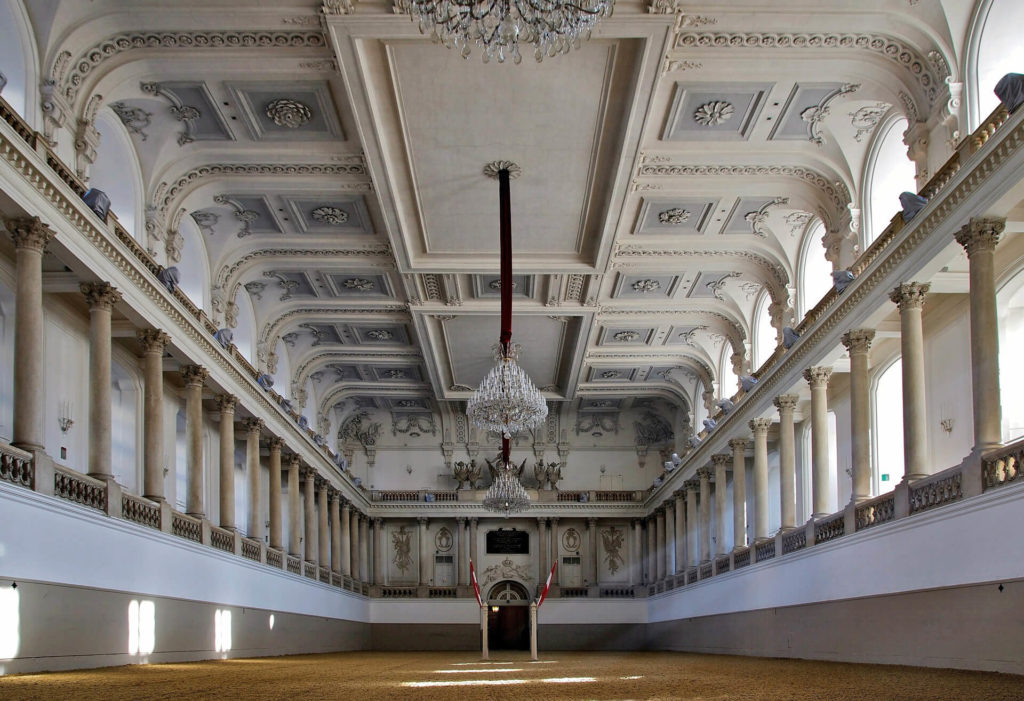
The history of the Spanish Riding School can be traced back to the reign of Emperor Maximilian II, who is credited with being the one who brought the world-famous Lipizzaner horses to Austria in the year 1562.
It is currently one of the few locations in the world where the traditional, aristocratic method of horseback riding is still taught and performed. One of the best things to do in Vienna is to go to the Baroque Winter Riding School and watch the world-famous equestrian displays that have been taking place there ever since the time of Charles VI.
The magnificent hall was constructed in 1735 and was intended to be a venue for members of the nobility to display their equestrian prowess. Tickets to see these magnificent animals perform their ballet are in high demand, so make sure to make your reservation online as far in advance as you can.
4. Schönbrunn Palace, Vienna
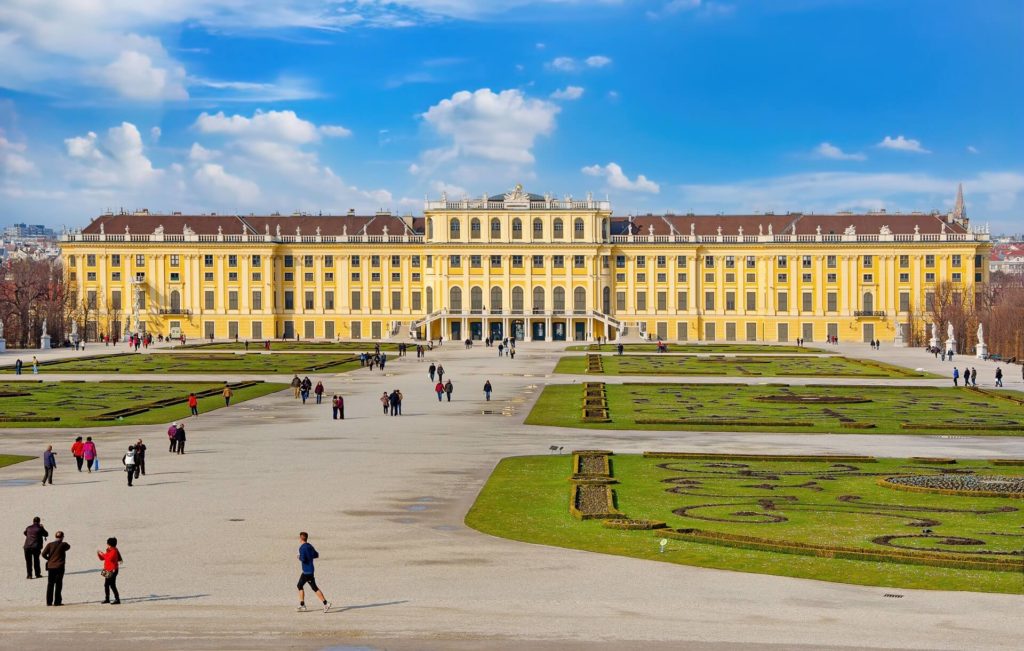
The Baroque Schonbrunn Palace, which is situated on the outskirts of Vienna, was finished being built in the early 1700s and later served as a summer residence for Maria Theresa, who was the Empress of Austria.
The Royal apartments, the Great Gallery with its ornate ceiling paintings, the Million Room, and Maria Theresa’s salon with its carved and gilded rosewood panels are some of the highlights of a tour through the 40 rooms of the palace that are open to the public. Other rooms of the palace are closed to the public. You’ll also get to see the magnificent Hall of Mirrors, which is adorned with mirrors that have gold Rococo frames. The palace has 1,441 rooms, and it is surrounded by 500 acres of parks and gardens that are also designed in the Baroque style of the 18th century.
Formal gardens, a labyrinth, the Palm House, which is filled with tropical and exotic plants and butterflies, an Alpine garden with a farmhouse, Europe’s oldest zoo, and the Classical Gloriette, a grand marble structure that crowns a hill above the gardens, should all be included in your excursion to the Schönbrunn Palace grounds.
The building that formerly housed the Winter Riding School is now home to a carriage museum that features dozens of historical state coaches and sleighs. UNESCO has designated the entire complex consisting of the palace and gardens as a World Heritage Site.
5. Innsbruck’s Hofburg and Hofkirche
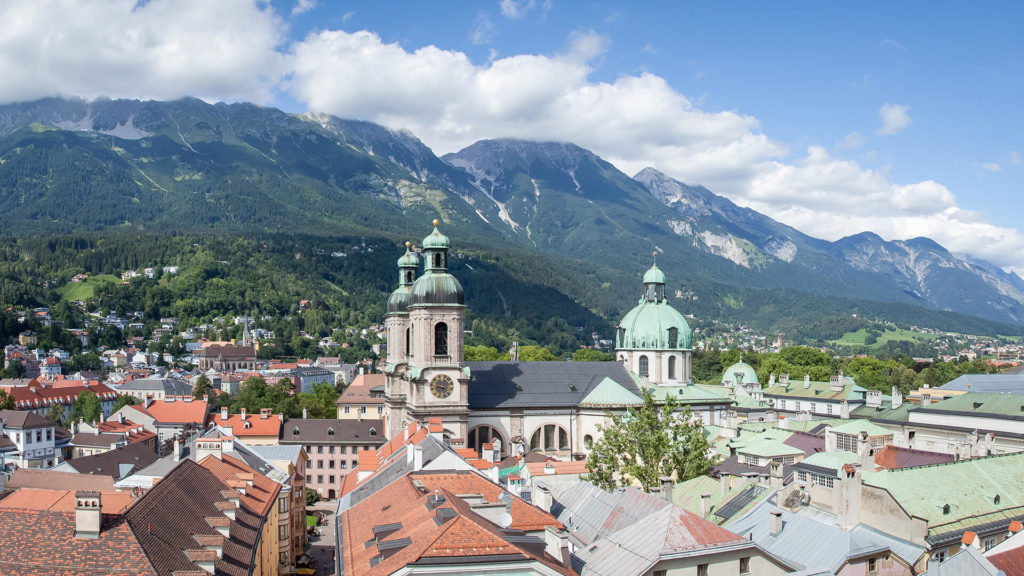
During his reign in the late 1400s and early 1500s, Emperor Maximilian I made Innsbruck the primary residence of the Hapsburg family as well as the seat of the Hapsburg government. As a result, the city became a pivotal location in Europe. The Empress Maria Theresa redesigned his palace, which was known as the Hofburg, in the Baroque and Rococo styles of the 18th century. The opportunity to view the opulent royal apartments, the marble Giant Hall (Riesensaal), and the painted ceilings throughout the building are some of the highlights of a tour.
The magnificent Tomb of Emperor Maximilian I, who passed away in 1519, is the most impressive feature of the Hofkirche, also known as the Court Church. The enormous sarcophagus made of black marble and adorned with a bronze statue of the Emperor is the centerpiece of the monument. It is generally agreed that this piece of sculpture represents the pinnacle of German Renaissance art. On the sides of the sarcophagus are 24 marble reliefs depicting events in the Emperor’s life. Surrounding the sarcophagus are 28 larger-than-life-size bronze statues of the Emperor’s ancestors and contemporaries. These statues were created during the reign of the Emperor (look out for King Arthur).
Other works of sculpture include twenty-one bronze busts of Roman emperors as well as twenty-three bronze statues of saints associated with the Habsburg family.
6. Melk Benedictine Abbey
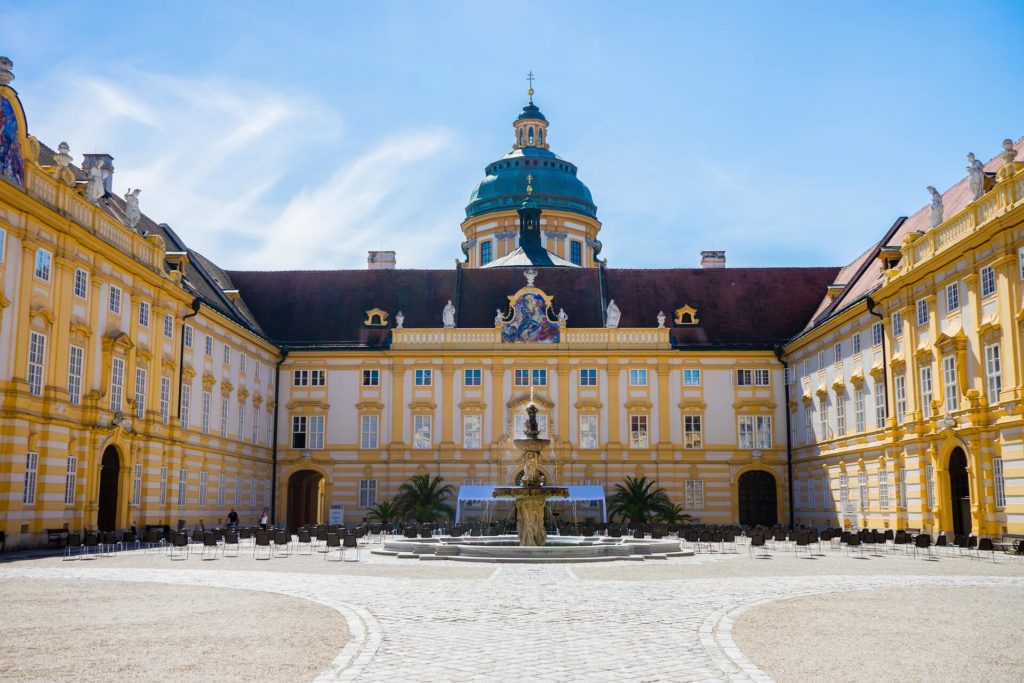
Melk Abbey is one of the most well-known monastic sites in the world, and its magnificent buildings are arranged in a way that centers on seven different courtyards. The west end of this enormous, 325-meter-long complex, with its twin-towered church that rises above a semicircular terrace range, is the most prominent aspect of the structure.
The abbey is not only impressive because of its location on a rocky outcrop high above the town of Melk and its view of the Danube, but it also features a plethora of other wonderful reasons to spend a few hours touring it. These include the tomb of Saint Coloman of Stockerau, the remains of Austria’s first ruling family, the House of Babenberg, and the magnificent 196-meter-long Imperial Corridor, which features portraits of Austria’s rulers, including one of the Empress Maria Theresa.
You’ll also get to see the Imperial Rooms, which are filled with statues, paintings, and displays that relate to the history of the abbey as you make your way through the grounds.
7. Hallstatt and the Dachstein Salzkammergut
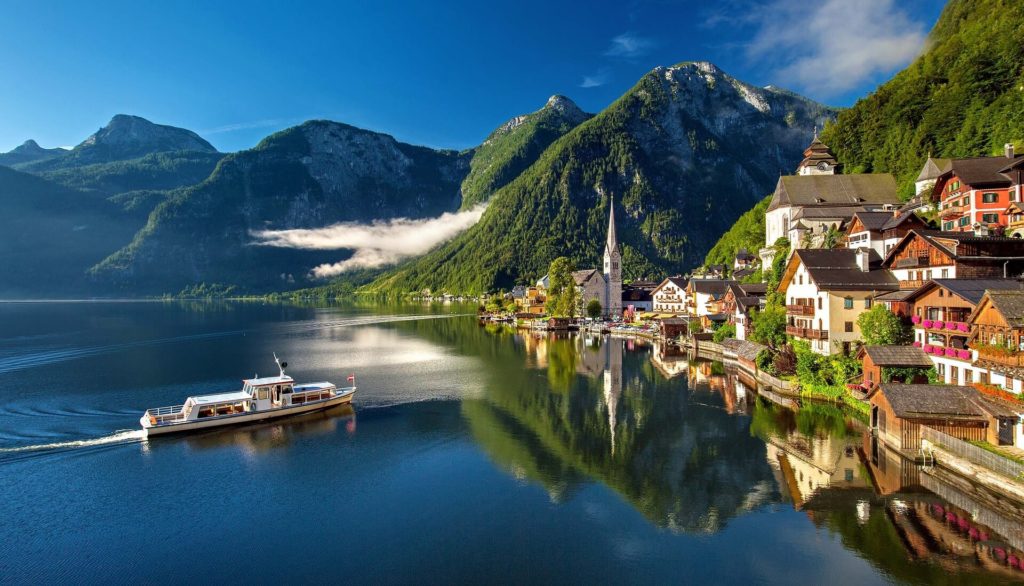
Without a doubt, Hallstatt is among the most picture-perfect little towns in all of Austria, if not all of Europe. It is also an excellent starting point for excursions into the breathtaking Dachstein Salzkammergut region, which is listed as a UNESCO World Heritage site.
The prosperous history of salt production in Hallstatt, which dates back to prehistoric times, is evidenced by the stunning baroque architecture that can be found throughout the city.
You can also go to the underground salt lake that is located in the nearby Hornerwerk cavern, or you can explore the Dachstein Caves, which are one of the most impressive cavern networks in Europe and have areas that are as deep as 1,174 meters. The Giant Ice Cave, with its subzero summer temperatures and enormous caverns with magnificent frozen waterfalls, and the Mammoth Cave, with its huge pipe-shaped galleries formed by an ancient underground river, are two of the cave system’s highlights. Both caves are located in the same area.
Above ground, visitors have the opportunity to scale the incredible 5 Fingers viewing platform, a metal structure that hangs over a sheer drop of 400 meters and provides excellent views of the mountains that are in the surrounding area.
8. Skiing at Kitzbühel and Kitzbüheler Horn
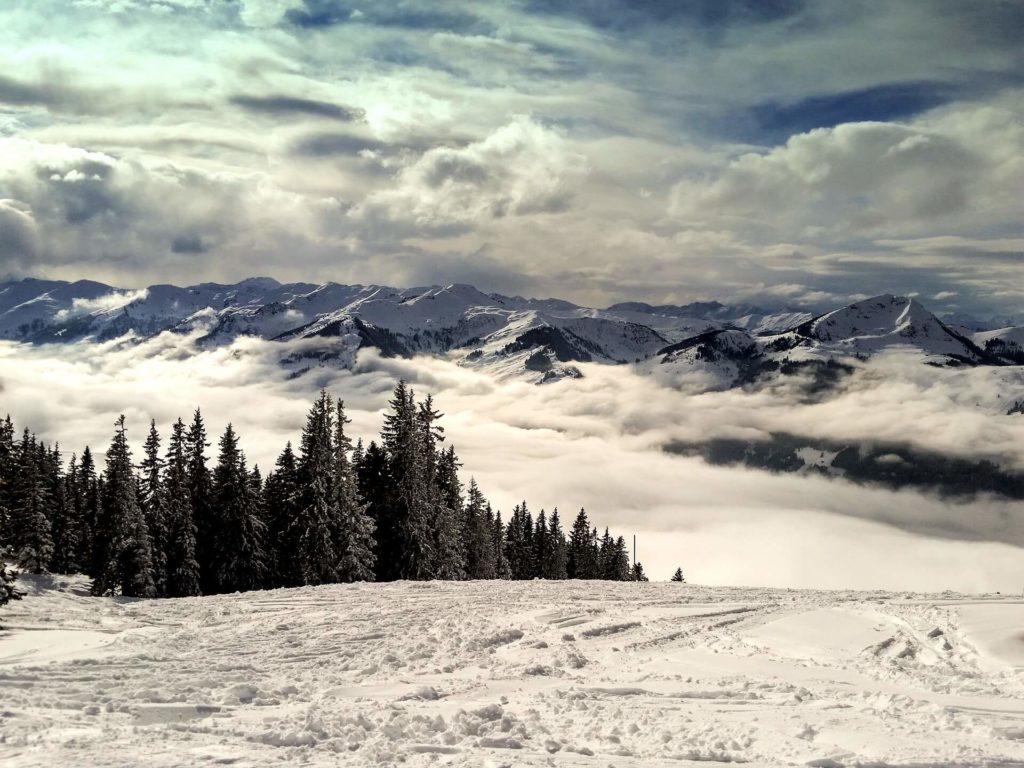
Kitzbühel, a well-known resort town in Austria, is widely considered to be one of the best places in Austria to go skiing. It offers snow enthusiasts 170 kilometers of skiable pistes and slopes that are dotted with small mountain huts, where skiers and snowboarders can stop for traditional Alpine refreshments and snacks.
In spite of the fact that it hosts the annual Hahnenkamm, the most difficult of all downhill ski races, Kitzbühel has plenty of terrain for skiers of all skill levels spread across its three skiing areas. The Bichlalm skiing area, the smallest of the three, is specifically designed for freeriders.
But Kitzbühel is not just for skiers. The town is as picture-perfect as it is possible for an Alpine village to be, what with its walls and frescoed houses, as well as its backdrop of snow-covered Alps.
In the winter, the 1,998-meter Kitzbüheler Horn is a popular destination for skiers, and in the summer, it is a popular destination for mountain hikers. Additionally, the summit of the mountain can be reached by cable car from the Pletzeralm. It is widely regarded as having one of the most breathtaking panoramas of any summit in all of Tyrol, with a view that extends to the south from the Radstadter Tauern to the Otztal Alps, to the north from the nearby Kaisergebirge, to the west from the Lechtal Alps, and to the east from the Hochkonig.
The 1,772-meter-high Hornkopfli, which can also be reached by cableway, is located to the south of the Kitzbüheler Horn. On the peak, in addition to providing breathtaking panoramas, you’ll also find the Gipfelhaus, a one-of-a-kind mountaintop home, as well as a chapel, a restaurant, and an Alpine garden.
9. Belvedere Palace, Vienna
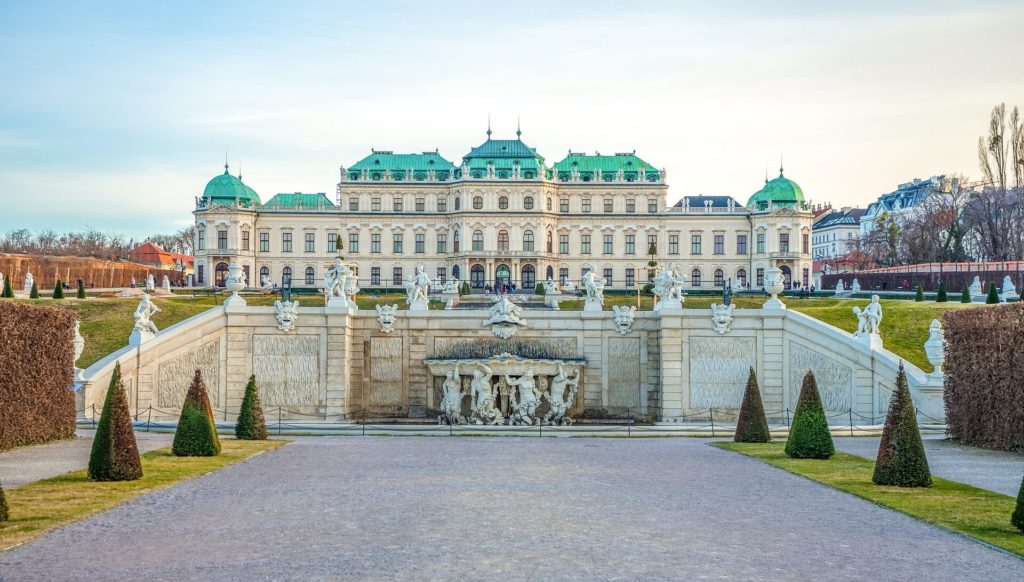
The magnificent Belvedere Palace is yet another of Austria’s most-visited palaces, and it is unquestionably worthy of a spot on your travel itinerary for Vienna (Schloss Belvedere). This significant historical site, which is most commonly referred to as simply “The Belvedere,” is actually divided into two major sections, which are referred to as the Upper (Oberes) and Lower (Unteres) Palaces.
Upper Palace should be your destination of choice if you only have time to explore one of the palaces. In this section of the attraction, you will find the largest portion of the attraction’s impressive collection of artworks, and you will also have the opportunity to view one of the architectural treasures that has been preserved the best in the country. The Sala Terrena, which is the main hall, is notable for its statues and stucco vaulted ceiling. Other highlights include the Carlone Hall, which features a ceiling fresco; the two-story Marble Hall, which features numerous sculptures and paintings; and the impressive Ceremonial Staircase.
The Lower Palace is just as deserving of a visit as the Upper Palace. The Marble Gallery, which is known for its collection of statues; the Grotesque Hall, which is known for its numerous fine wall paintings; and a second Marble Hall, which is known for its fascinating ceiling fresco, are among the highlights of the attraction.
The palace features a fantastic café and restaurant, as well as three shops and a wonderful Christmas Market for visitors who are here during the winter months and are planning to stay for the day (which you should definitely do!).
10. Medieval Burg Hochosterwitz
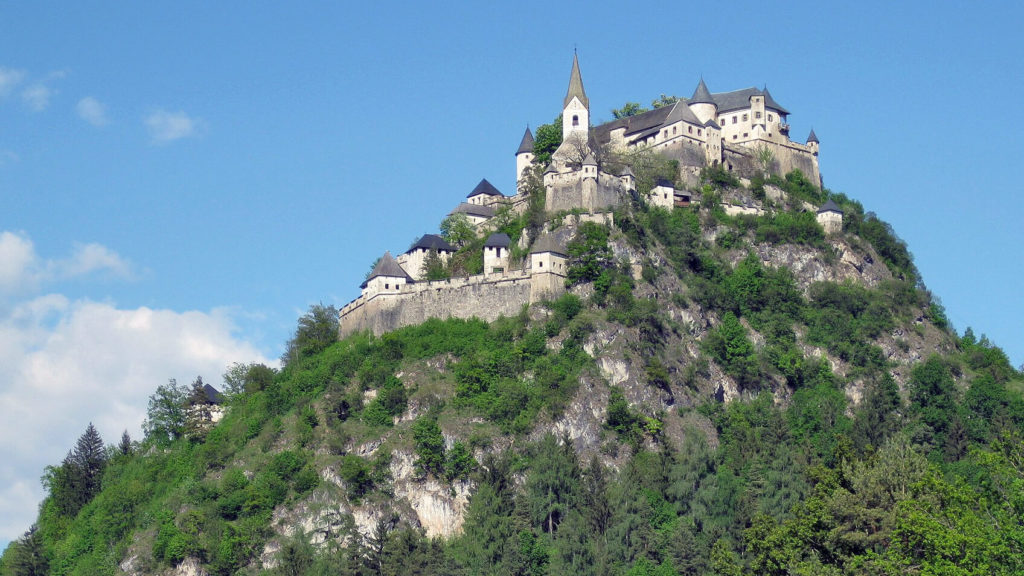
The impressive Burg Hochosterwitz, which is considered Austria’s most significant medieval castle, is located to the east of St. Veit on a crag that rises approximately 160 meters above the valley floor. After a troubled past, the castle, which was mentioned for the first time in the year 860 A.D., was eventually taken over by the Khevenhüller family and subsequently expanded in 1570 in preparation for Turkish conquest. The Khevenhüller family has owned the castle ever since it was built, and it has never been taken by an enemy.
The steep access road to the castle is called the Burgweg, and it winds its way up through the 14 defensive gates to the lovely arcaded courtyard. Here, you’ll find the little chapel with its wall and ceiling paintings dating back to 1570, as well as the church at the southwestern end of the castle, which has a high altar that was constructed in 1729.
11. The Grossglockner Road to Franz-Josefs-Höhe
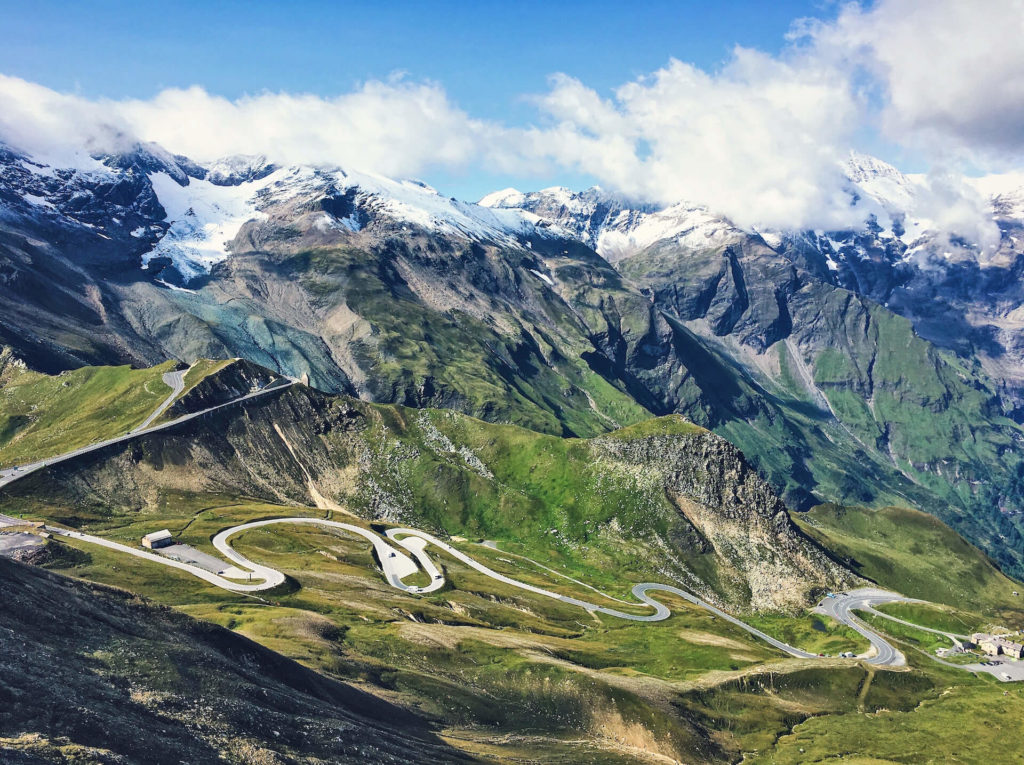
The Grossglockner Hochalpenstrasse was built between 1930 and 1935. It goes from Bruck in the Pinzgau to Heiligenblut at the base of the Grossglockner. It is one of the most beautiful mountain roads in Europe, and it follows the path of an old Roman road.
Even though it’s less important as a way to get through the Alps, it’s still a great highway through the Hohe Tauern, Austria’s highest mountain range and one of the best things to see in the country. The road winds through the mountains for 22 kilometers at an altitude of more than 2,000 meters. It goes up to the summit tunnel on the Hochtor at 2,506 meters and then down into the valley on the other side.
The road leads to the huge Hohe Tauern mountain range, where Franz-Josefs-Hohe is known all over Europe for its amazing views. This great spot is 2,422 meters above sea level and got its name from a visit by Emperor Franz-Josef in 1856. From there, you can see amazing views of the country around you. The Grossglockner, which is Austria’s tallest mountain at 3,798 meters, stands out in the view.
Make sure to stop at the visitor center to see the detailed displays about the area’s history, its glaciers, and general tourist information.
12. St. Stephen’s Cathedral in Vienna

Within the historic district of Vienna’s city center is located the Stephansdom, an impressive Gothic cathedral also known as St. Stephen’s. The original Romanesque church, which was built in the 12th century, was replaced in the 13th century by a Late Romanesque church; however, the enormous gate and the Heathen Towers (Heidentürme) still stand today.
During the later Gothic reconstruction that took place in the 14th century, the choir and the Chapels of St. Eligius, St. Tirna, and St. Catherine were added. The following century saw the construction of the famous 137-meter-high South Tower (Steffl). The church was reconstructed following significant damage sustained during World War II.
It is possible to take an elevator up to a viewing platform on the North Tower, which is home to the enormous Pummerin Bell. The views from the Watch Room at the top of the Steffl are stunning, and they are worth the climb up its 343 steps. You won’t want to miss the catacombs, which date back to the 14th century, and the cathedral treasury, which is where some of the cathedral’s most significant artifacts are on display.
13. Klosterneuburg Abbey and the Verdun Altar
St. Leopold’s Chapel, which dates back to the 12th century and is located within the lovely Klosterneuburg Abbey, can be reached by descending a winding staircase. In addition to that, it is the location of the well-known Altar of Verdun. The altar, which was created by Nicholas of Verdun and dates back to approximately 1181, is made up of fifty-one panels of champlevé work on gilded copper and depicts biblical scenes. It is considered to be the best example of medieval enamel work that is still in existence.
After a fire in 1329, the panels were reassembled to form the present winged altarpiece. Prior to that, they had been mounted on the reading pulpit of the previous Romanesque church. The Abbey Museum houses four painted panels that were originally affixed to the altar in 1331. These panels are the oldest in Austria; they were painted in Vienna before the year 1329.
14. Maria Saal Cathedral
The Church of Maria Saal, which is more commonly known as the Maria Saal Cathedral, is located on a hill that is situated high above the Zollfeld and is regarded as one of the most important destinations for pilgrims in the state of Carinthia, which is located in the southern region of Austria. Around the year 750 AD, Bishop Modestus established a church at this location, and it was from this church that the surrounding area was converted to Christianity.
On the foundations of a Roman basilica, the current church with its twin towers was constructed in the Gothic style during the first half of the 15th century. Subsequently, the church underwent renovations during the Renaissance and Baroque eras.
The west facade, with its twin towers and its fine old gravestones, is one of the most notable features. A Roman stone relief from around the year 300 AD is particularly fascinating, as is the Keutschach Epitaph, which dates back to the 16th century and depicts the coronation of Our Lady.
15. Krimmler Ache: Austria’s Tallest Waterfalls
The 380-meter drop of the Krimmler Ache, which happens to be broken up into three enormous cascades, makes for an excellent day trip from the nearby village of Krimml. Krimml is a wonderful place to stop for a few days if you’re into hiking because it is located at an elevation of 1,076 meters and is perched high above the Salzachtal in a wooded valley.
In addition to the many wonderful hikes that lead to the waterfalls, there is also a rewarding ascent to the Schettbrücke, which can then be followed by a trek to the magnificent Krimmler Tauernhaus. The 2,911-meter-tall Glockenkarkopf on the Italian border can be climbed by experienced mountaineers from this vantage point.
16. Eisriesenwelt Werfen: The largest ice cave in the world
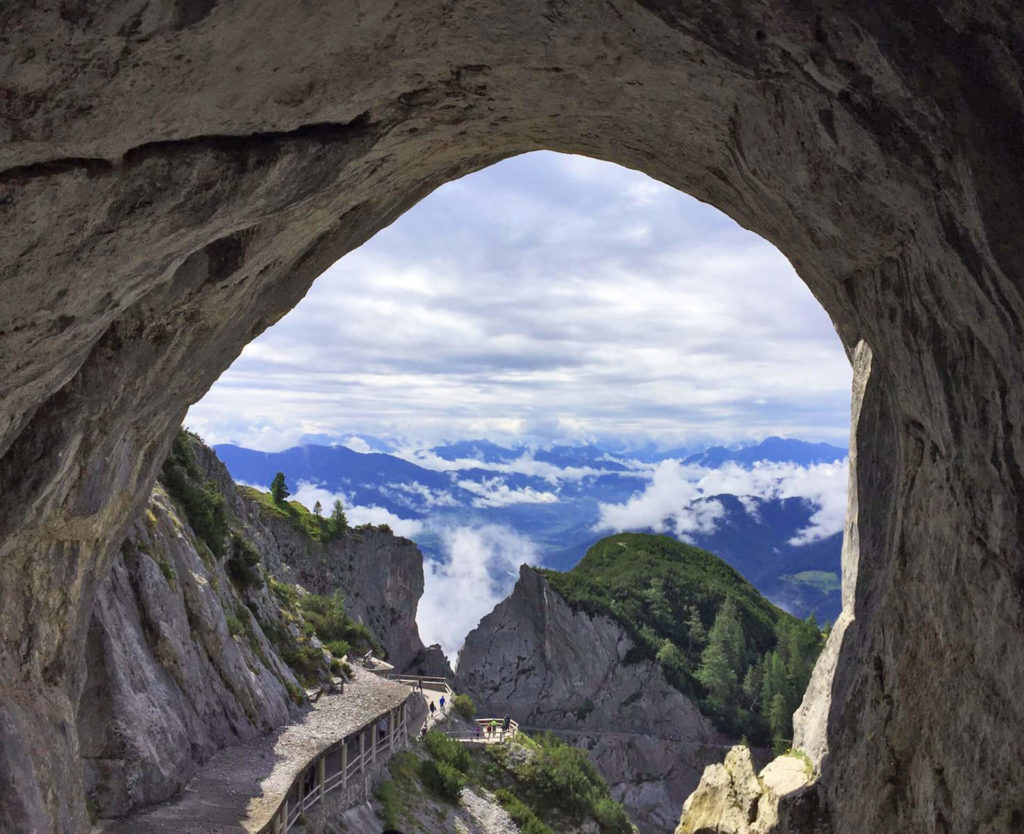
The spectacular World of the Ice Giants can be found on the western edge of the Tennengebirge. It is the world’s largest network of ice caves and is truly a sight to behold. The caves, which are approximately 30,000 square meters in total area, were formed during the Tertiary period by an underground river. They were first found in 1879, and in 1912, they were made available to the general public. To this day, an incredible 45 kilometers of the network have been explored.
After navigating your way along the Great Ice Wall, you will emerge into the immense Hymir Hall, which is adorned with a variety of imposing ice sculptures and icicles. Stone steps lead up to the magnificent Ice Palace and the Eistor, also known as the Ice Gate, which is a wall of ice measuring 1,775 meters in height. You can expect to spend the better part of a day exploring the area because the guided tours last for a total of two hours, and the journey to and from the caves also takes a few hours.
17. The Styrian Armoury (Landeszeughaus)
The Landeszeughaus, also known as the Styrian Arsenal, can be found right in the middle of Graz. The building was constructed in 1644, and inside it is a magnificent collection of arms and armor from the 17th century that has been perfectly preserved. The collection contains enough equipment to arm 32,000 men, including helmets and weaponry.
While you are in Graz, you shouldn’t miss the opportunity to go to the Landhaus. It was constructed between 1557 and 1565 in the Renaissance style, and the main facade is characterized by rounded windows and a veranda. The magnificent stucco ceiling in the Knights’ Hall dates back to 1746, and it can be found in the magnificent arcaded courtyard that features three-story pergolas on two of the sides and a Renaissance fountain.
18. Old Town Innsbruck & the Golden Roof
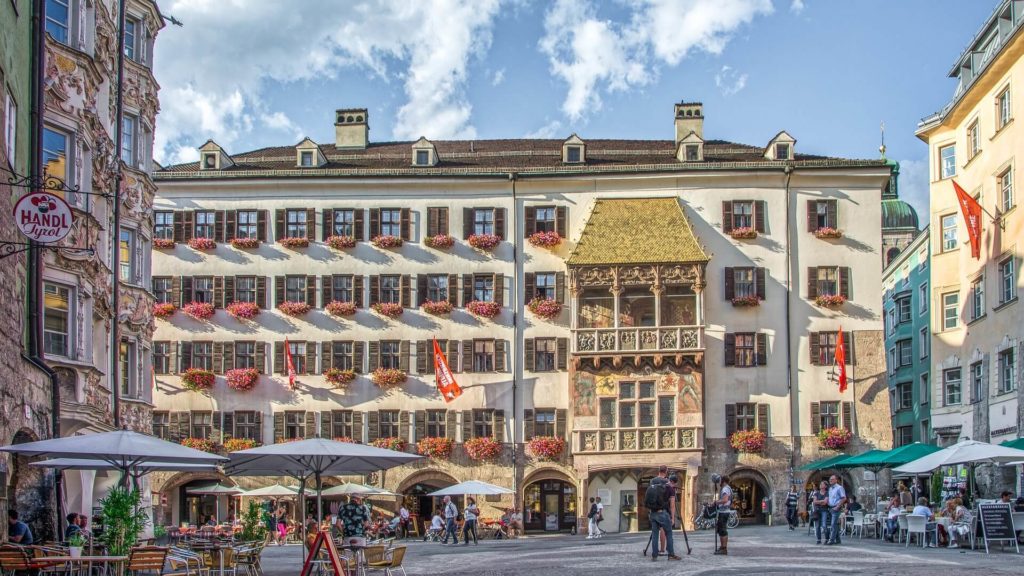
The lovely city of Innsbruck in Austria is not only home to some of the most well-preserved architecture in the country, but it is also home to some of the oldest structures that are the most peculiar and one-of-a-kind. The Golden Roof in Innsbruck is probably the most well-known of the city’s various points of interest (Goldenes Dachl).
This artifact from the city’s illustrious Hapsburg era can be found in the very center of Innsbruck’s Old Town (Altstadt), where it adorns the Late Gothic oriel window of the Neuer Hof, a palace that was formerly inhabited by members of the royal family. As you make your way along the arcaded Herzog-Friedrich-Strasse, you won’t be able to miss this picture-perfect location for taking selfies. When the conditions are right (i.e., when the sun is out), the roof can give the impression that it is glowing.
The Golden Roof dates back to 1496, when it was added to the building to mark the marriage of Holy Roman Emperor Maximilian I, and served as a royal box so that the couple could enjoy the celebrations in the square to mark the occasion. The Golden Roof is comprised of no less than 2,657 gilded copper tiles. After you’ve taken some pictures, don’t forget to stop by the Golden Roof Museum, which is dedicated to the enduring legacy of the Emperor.
Don’t miss out on exploring the maze of cobblestone alleys and streets that surround this Innsbruck landmark. This stunning city in Austria is surrounded on all sides by stunning mountains, so not only will you get to see a lot of wonderful old buildings, but you’ll also get some great views of those mountains.





